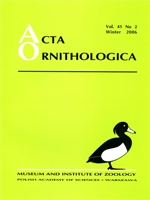The Common Gull is a rare and endangered breeding species at inland habitats in Poland as well as in some other countries in Europe. Breeding biology, habitat and nest site selection were studied in this species in southern Poland. Almost all birds nested on industrial water bodies (gravel pits, sedimentation basins), although fishponds and reservoirs were the most abundant habitat in the study area. Birds built their nests mainly on islets, man-made constructions and dry land on the shores of water bodies. The islets occupied by birds were smaller and were covered by lower vegetation than the unoccupied ones. When occupied islets on industrial water bodies were compared with a random sample of islets on fishponds, the latter were found to be larger, with taller and denser vegetation. This may explain why Common Gulls did not breed on fishponds in southern Poland. Shore-breeding birds nested in open areas with sparse vegetation, occupying sites with less vegetation cover and closer to shrubs or trees than randomly selected points. Breeding performance (mean date of clutch initiation, clutch size, clutch volume, hatching success and breeding success) did not differ among nests built on islets, man-made constructions or on the shores of the water bodies. Breeding success was more than twice as high as in large riverine colonies. Industrial water bodies may become important alternative breeding habitats for this species in Poland.
How to translate text using browser tools
21 January 2022
Habitat and Nest Site Selection in the Common Gull Larus canus in Southern Poland: Significance of Man-Made Habitats for Conservation of an Endangered Species
Piotr Skórka,
Rafał Martyka,
Joanna D. Wójcik,
Tomasz Babiarz,
Janusz Skórka
ACCESS THE FULL ARTICLE

Acta Ornithologica
Vol. 41 • No. 2
December 2006
Vol. 41 • No. 2
December 2006
breeding biology
Common Gull
habitat selection
Larus canus
man-made habitats
nest sites
nest size




